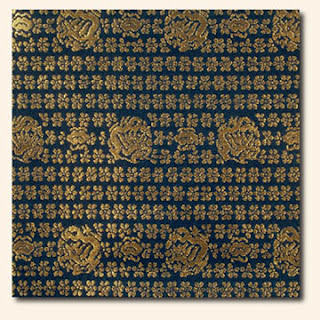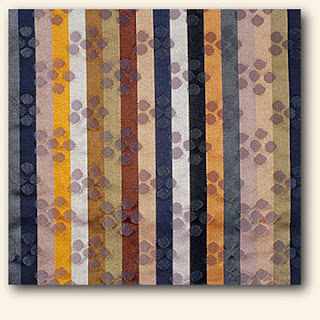I just want to call your attention to a few new (at least new to me) publications of interest to fellow Chado students, and they are in English. You can find these along with other recommended books at the Issoan Tea Site.
 NEW! Sen Genshitsu Talks About the Enjoyment Of Tea by Sen Genshitsu, Urasenke Grand Tea Master XV, Translated to English by Maya Perry
NEW! Sen Genshitsu Talks About the Enjoyment Of Tea by Sen Genshitsu, Urasenke Grand Tea Master XV, Translated to English by Maya Perry
ISBN-10: 4473032965 Paperback
ISBN-13: 978-4473032966
Fifteenth Generation Urassenke Grand Master talks about memorable tea gatherings, guest and host, the lineage of Rikyu, the spirit of hospitality, tea equipment, and becoming better at doing tea among many other topics. Notable for the English translation of the hundred poems at the back of the book.
 NEW! Urasenke Chado Textbook, translated to English based on the Japanese textbook, Urasenke Chado
NEW! Urasenke Chado Textbook, translated to English based on the Japanese textbook, Urasenke Chado
ISBN-10: 4473036960 Paperback
ISBN-13: 978-4473036964
Replacement for Uransenke Handbooks 1 and 2. A much more informational book with less emphasis on actual teaching and photos of procedures. Topics include: the spirit of Chado, Zen, Classics related to Chado, tea and health, history and development of Chado, the tea room, the roji, utensils and the significance of temae. Reference material at the back of the book.
 NEW! Moon by the Window, The Calligraphy and Zen Insights of Shodo Harada
NEW! Moon by the Window, The Calligraphy and Zen Insights of Shodo Harada
ISBN 9780861716487 Paperback
Shodo Harada is internationally recognized both as a Zen teacher and as a world class master of the fine art of Zen calligraphy. Harada regularly exhibits and gives calligraphy demonstrations in museums and universities in the U.S. and abroad. Moon by the Window is a collection of 108 pieces of Shodo Harada's calligraphic Zen masterpieces assembled over the decades, and drawn from the rich and poetic literature of the Zen tradition. Each work is accompanied by Harada Roshi's sharp and glittering commentaries, making each page a spiritually edifying and aesthetically uplifting treasure.
Jun 30, 2012
New reading material
Jun 27, 2012
Meibutsugire part 4 Kanto
Fabrics with stripes, plaid or checked patterns are called kanto.
There are different reasons why fabrics with certain patterns can be considered kanto
fabrics, and no clear rules exist for classifying them.
In the 16th centry, when kanto fabrics were introduced into Japan,
the striped and checked patterns felt new and fresh to chajin (Tea practitioners).
From that time on, they were used for making pouches for chaire (thick tea container), considerably
earlier than donsu and kinran. Even after donsu and kinran became highly valued,
the use of kanto fabrics did not decline because they provided a new range of fabric colors.
Here are a few examples:
 |
| Aoki kanto |
 |
| Kapitan kanto |
 |
| Kapitan kanto with large stripes |
 |
| Mumei kanto |
 |
| Sushuji kanto |
 |
| Tosai Kanto (10 colors) |
 |
| Nikuzushi kanto |
 | |
| Nikuzushi kanto close up |
 |
| All three above: Sagara kanto |
 |
| Yoshino kanto |
 |
| Yoshino kanto |
*Fabric photos courtesy of Kitamura Tokusai Fukusaten Co., Ltd., Kyoto, Japan.via the now closed website Tea Hyakka..
Jun 23, 2012
Meibutsugire part 3 - Donsu
Donsu , a damask satin. like kinran, comes in a great variety of patterns. It is a thick, lustrous fabric made of silk. It is not as dazzling as kinran,
but rather has a quiet kind of beauty. The design
is integrated into the ground and does not protrude from the surface of the cloth,
as in other brocades.
The pre-dyed warp and weft threads are woven where one side of the cloth is warp faced and the other is weft faced and a design is made by reversing the face in the pattern areas. Not all the meibutsugire fabrics caterogized as donsu have this weave structure. Some exceptions are woven with a twill ground. Since it is finely woven with strongly twisted dyed threads,
the overall feel of the fabric is soft.. Chajin especially loved the quiet patterns and pliability of donsu, and for this reason,
many chaire pouches have been made with it.
Some examples:
 |
| Ariso donsu |
Ariso donsu is an image of fish in the waves. You can also see this motif in the ariso tana and on other tea utensils.
All of the examples above are called Iyosudare donsu. The name comes from the rred blinds caled iyo sudare. The design usually consists of stripes with various treasures against a checkeboard ground, or plum blossoms. The original fabric had both treasures and blossoms in one continuous fabric, but you can see both designs separately. This fabric was made into a shifuku for the chuko meibutsu chaire called "Sokushiki"
 |
| Hosokawa donsu |
Hosokawa donsu was owned by Hosokawa Sansai (1564-1645) who was one of Rikyu's seven students.
 |
| Soami donsu |
 |
| Kamakura donsu |
 | |
| Rikyu-bai donsu |
 | ||
| Oribe donsu |
 |
| Sokun donsu |
 | |
| Sumiyoshi donsu |
 | |
| Mozuya donsu |
 |
| Sasazuru donsu |
*Fabric photos courtesy of Kitamura Tokusai Fukusaten Co., Ltd., Kyoto, Japan.via the now closed website Tea Hyakka..
Jun 16, 2012
Meibutsugire part 2 Kinran
Kinran(gold brocade) is considered the most gorgeous of the meibutsu-gire.
The first syllable of the word, kin, means "gold". the second, ran, refers to cloth that
was attached to the hem of a Buddhist cloak to strengthen it. Kinran has a ground wave of twill and weft patterns woven with either gold thread
or threadlike strips of gilded paper. Kinran was first made in China (known as Zhijin) during the Song Dynasty. It came to Japan through Sino-
Japanese trade at the end of the
Fujiwara and Kamakura periods, in form of ceremonial robes for Zen monks. Kinran began to be made in
Japan during the Momoyama period.
Below are some of the more well know kinran fabrics and patterns:
 |
| Futari Shizuka Kinran |
The name of this fabric comes from a Noh play called Futari Shizuka. It is said that Ashikaga Yoshimasa shogun (1436-1490) performed this particular play wearing a costume made of Futari Shizuka Kinran fabric. Late Sung period - early Ming period.
 |
| Daito Kinran |
 | |
| Osaka Kinran |
 |
| Wakuda-de Kinran |
 |
| Shippo Setsugekka Kinran |
Shippo Setsugeka Kinran is a design of interlocking rings, with snowflakes, moon and flowers, favored by the Urasenke14th Generation Grand Tea Master Tantansai.
 |
| Hariya Kinran |
 |
| Itoya Kinran |
 |
| Hanausagi Kinran |
 |
| Hanausagi Kinran |
 |
| Chaji Hanausagi Kinran |
 |
| Moegiji Hanausagi Kinran |
 |
| Suminokura Kinran |
There are many other famously named kinran fabrics, but you can begin to recognize these fabrics in your study when the guests ask about shifuku kereji.
*Fabric photos courtesy of Kitamura Tokusai Fukusaten Co., Ltd., Kyoto, Japan.via the now closed website Tea Hyakka..
Jun 2, 2012
Meibutsu-gire - the famous named fabrics
We have most often seen the meibutsu-gire, or famous named fabrics as kobukusa, the small patterned cloth, mounting for scrolls, and as shifuku or bags made to contain utensils. During the haiken or appreciation dialog, the guests ask about the shifuku fabric.
While there is a close relationship between Tea and meibutsu-gire, not all fabrics
used in Tea are meibutsu-gire. They are
generally fabrics that were made in China during the Song, Yuan, Ming and Qing
dynasties or fabrics made in South Asia during the 16th and 17th centuries. They
became famous either by their association with meibutsu tea utensils or because
they were favored by famous chajin.
The meibutsu-gire fabrics originated mostly from China as far back as the Southern Song dynasty (11-27-1279), but some also come from Persia, Southeast Asia, and some from Japan. The meibutsu-gire are characterized by the weaving technique, and the pattern. Sometimes the name comes from a person or family that owned or favored that particular fabric.
There are many categories of meibutsu-gire, and we have already seen examples of Nishiki weaving.
There are about 400 fabrics that are considered as meibutsu-gire. However, the main
ones we see today are Kinran, Donsu and Kanto. There are probably more than I can name, so if you are into these kind of fabrics, let me hear from you in the comments.
Actually, few Nishiki fabrics
are classified as meibutsu-gire. Here are photos of a few more meibutsu-gire Nishiki fabrics, so you can learn to recognize them:
 |
| Kiji Arareji Hanamon Nishiki |
 | |
| Kiji Arareji Hanamon Nishiki Close up |
 |
| Meibutsu Shoko Nishiki |
 |
| kariyasu Botan Nishiki |
 |
| Nashiji Kikukarakusa Nishiki |
 |
| Ichigo Nishiki |




